Case Study: Mary
The broad objective of this experimentation with DALL-E 2 was to generate self-portraits with a series of prompts, and to assess the experience of grappling with AI and its degree of accuracy to prompts. DALL-E outputs 4 images per prompt, and I've selected one from each prompt to demonstrate a range of characteristics and accuracy.
I began with a series of prompts aimed at a more cartoonish self-portrait. I included some concrete characteristics, a specific scenario inspired by my commutes to NYC, and a variety of media to test the range of the generator:
-
"Blonde girl reading a book alone on a train, Studio Ghibli, green color palette"
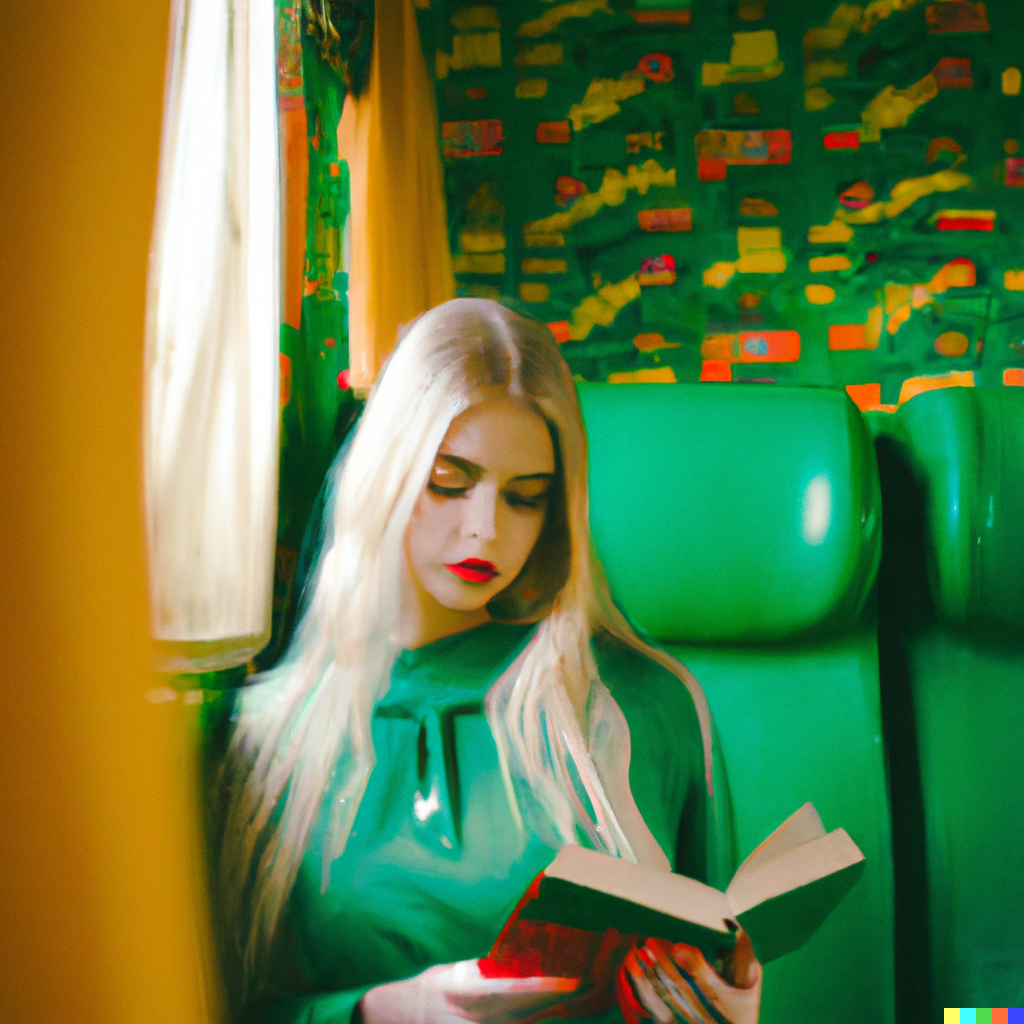
-
"Blonde girl reading a book alone on a train, misty and cartoonish, matte finish, green color palette"
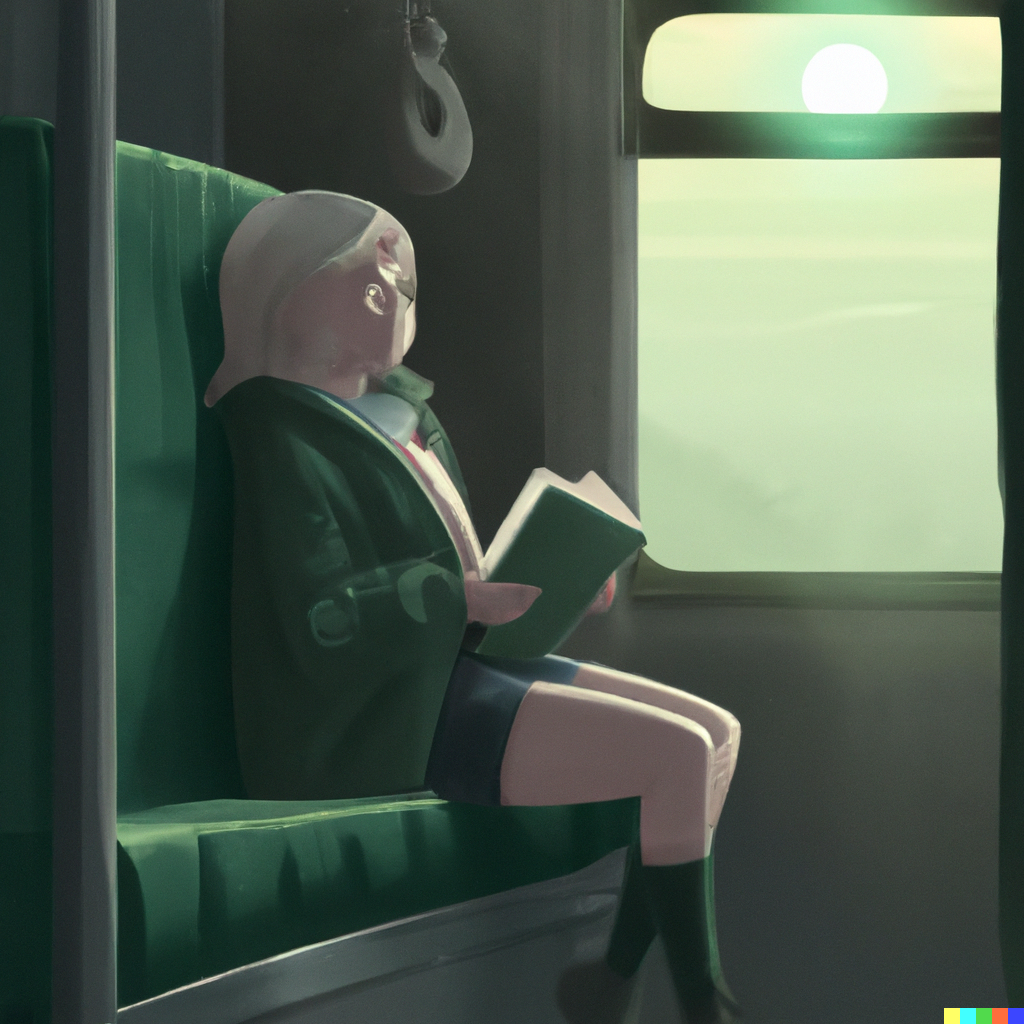
-
"Girl with dirty blonde hair reading a book alone on a train, misty and cartoonish, gouache, green color palette" (this is the closest to an accurate self-portrait)
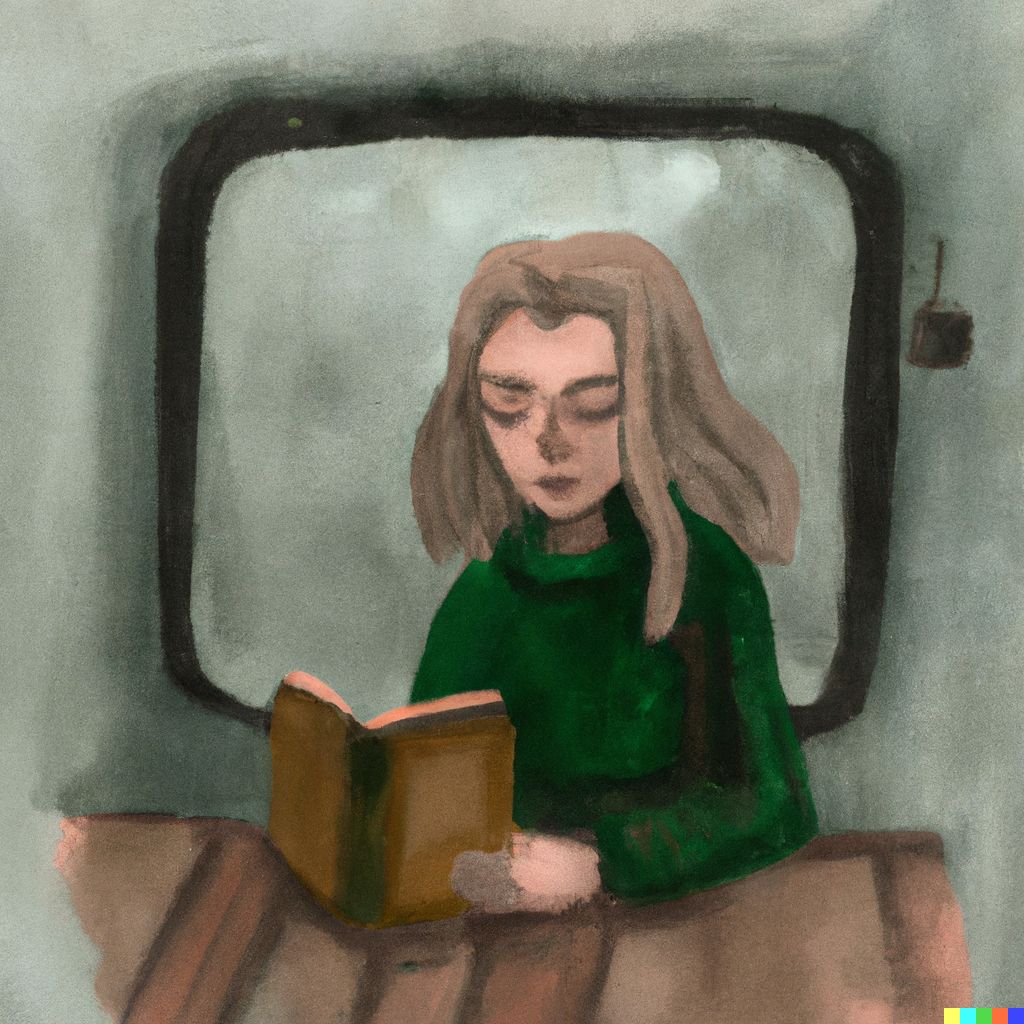
-
"Girl with dirty blonde hair reading a book alone on a train, misty, cartoonish, matte oil painting, green color palette" (this one is slightly creepy)
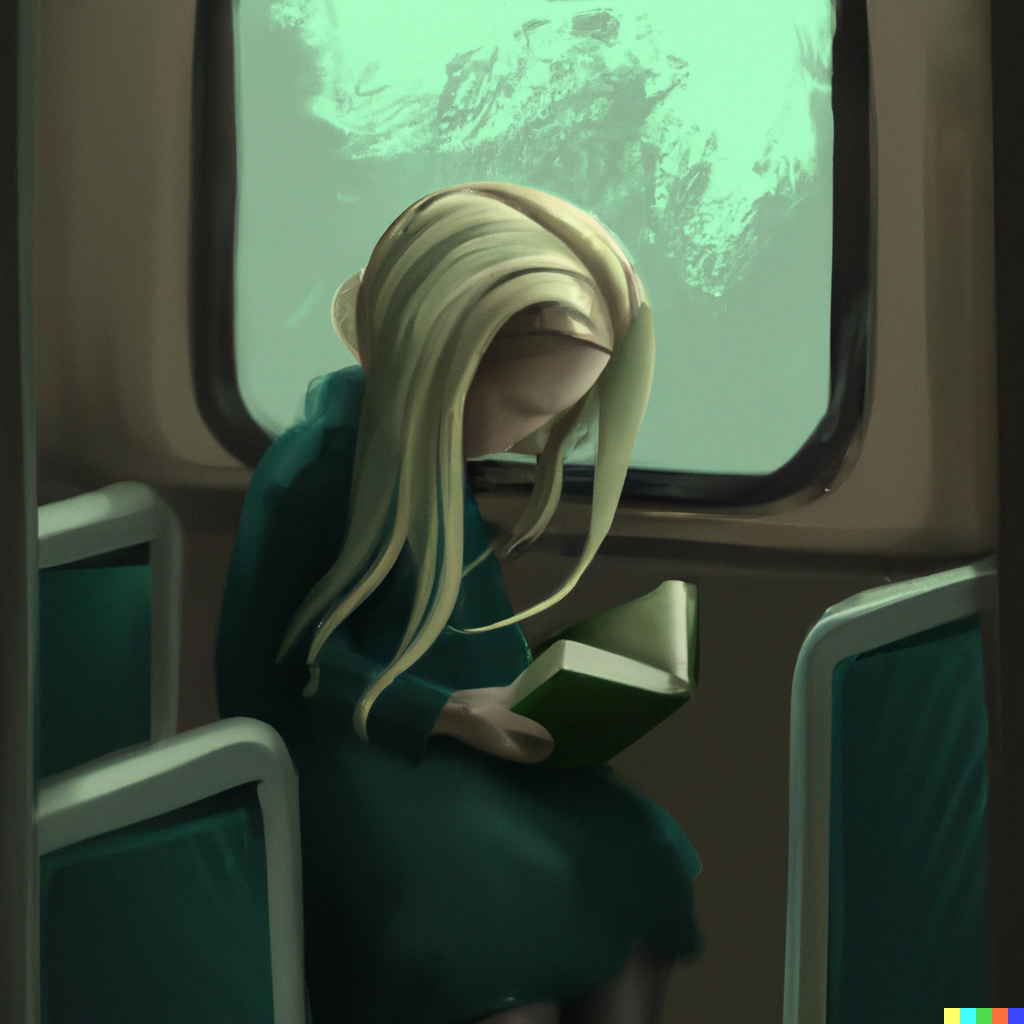
-
"Girl with light brown hair reading a book alone on a train, misty, cartoonish, digital art, green color palette"
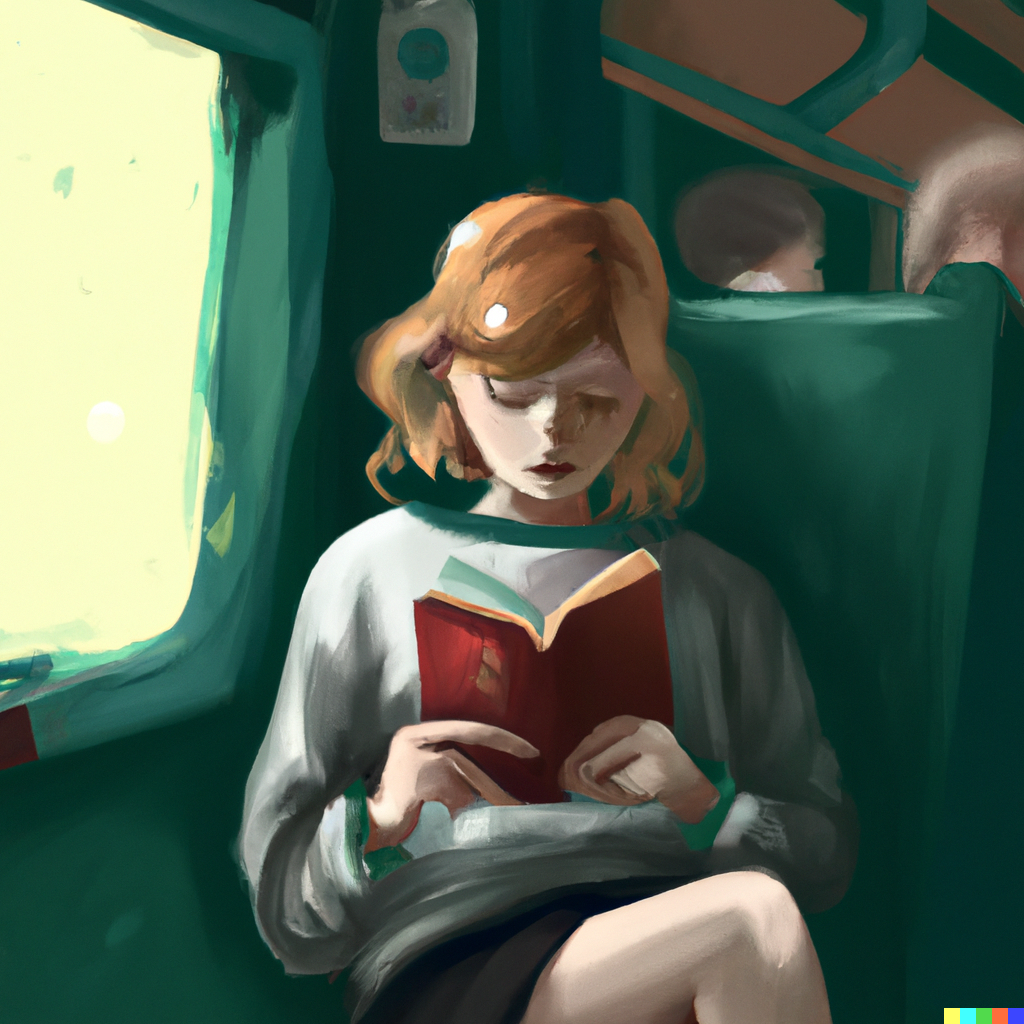
Throughout this process, I tweaked the prompt to see how much control I was allowed over certain elements of the output (like the hair color and texture of the image); however, there were often gaps between my expectation for a certain adjustment and the actual output. Furthermore, despite the cartoonish styles of the above prompts, the AI produced strange facial features and uncanny hands, which I expected more from realistic styles.
Next, I pivoted to attempt a more accurate self-portrait, hoping that the generator could mimic the style of Helen Lundeberg's portraits:
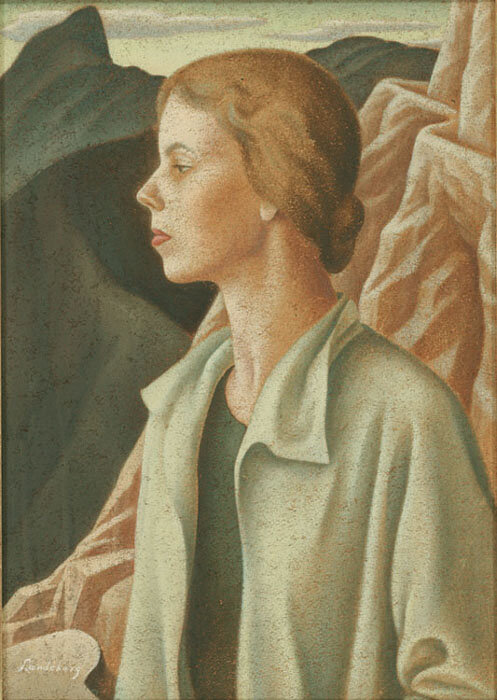
"Self Portrait" by Helen Lundeberg, 1933
To accomplish this, I used highly specific facial features in the prompts while incporating Post-Surrealism into most of the prompts:
-
"Oil painting portrait in the style of Helen Lundeberg, young woman in her early 20s, dark blonde medium length hair, light brown eyes, dark eyebrows, pale skin, small mouth, weak chin, gold hoop piercings, Impressionism, Post-Surrealism, pastel color palette"
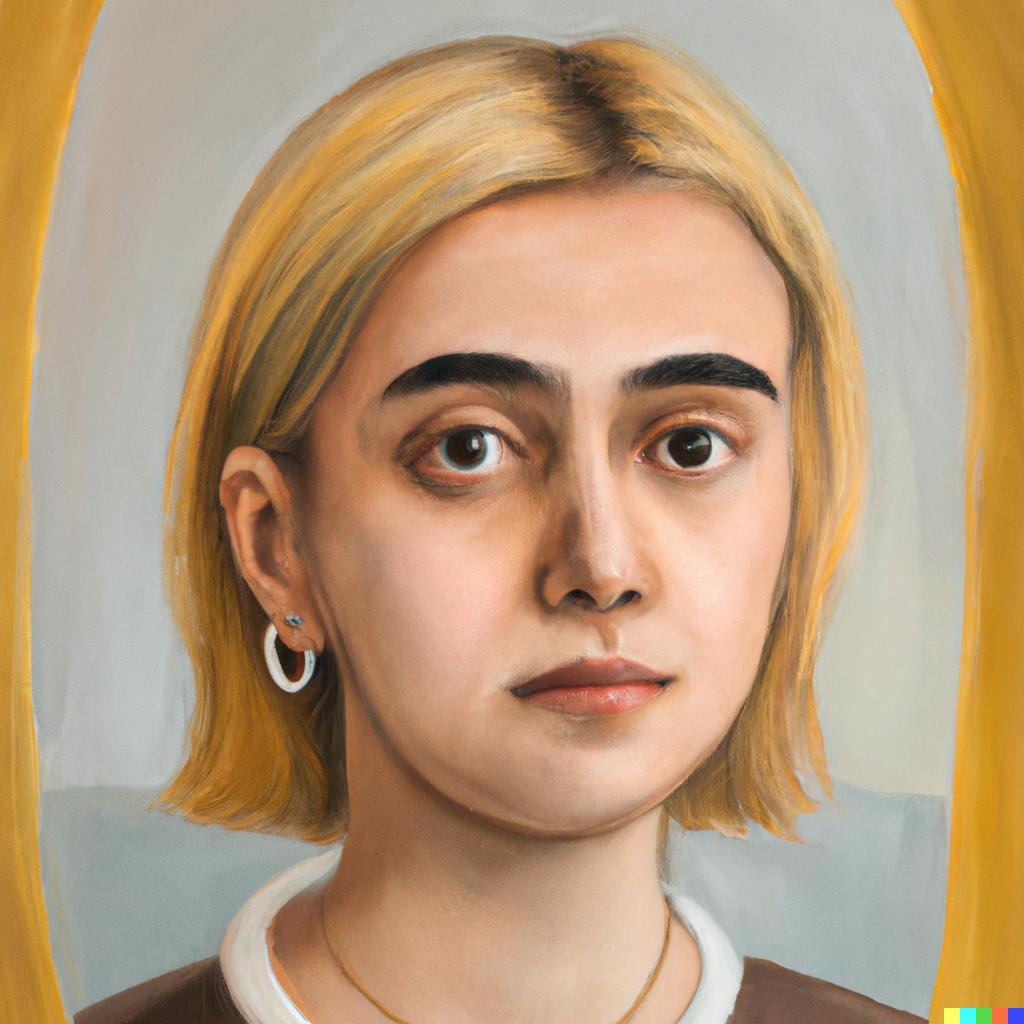
-
"Oil painting portrait in the style of Helen Lundeberg, young woman in her early 20s, dark blonde long layered hair, hazel almond eyes, dark eyebrows, pale skin, oval face, small mouth, weak chin, gold hoop piercings, Impressionism, pastel green color palette" (not sure where blue eyes came from)
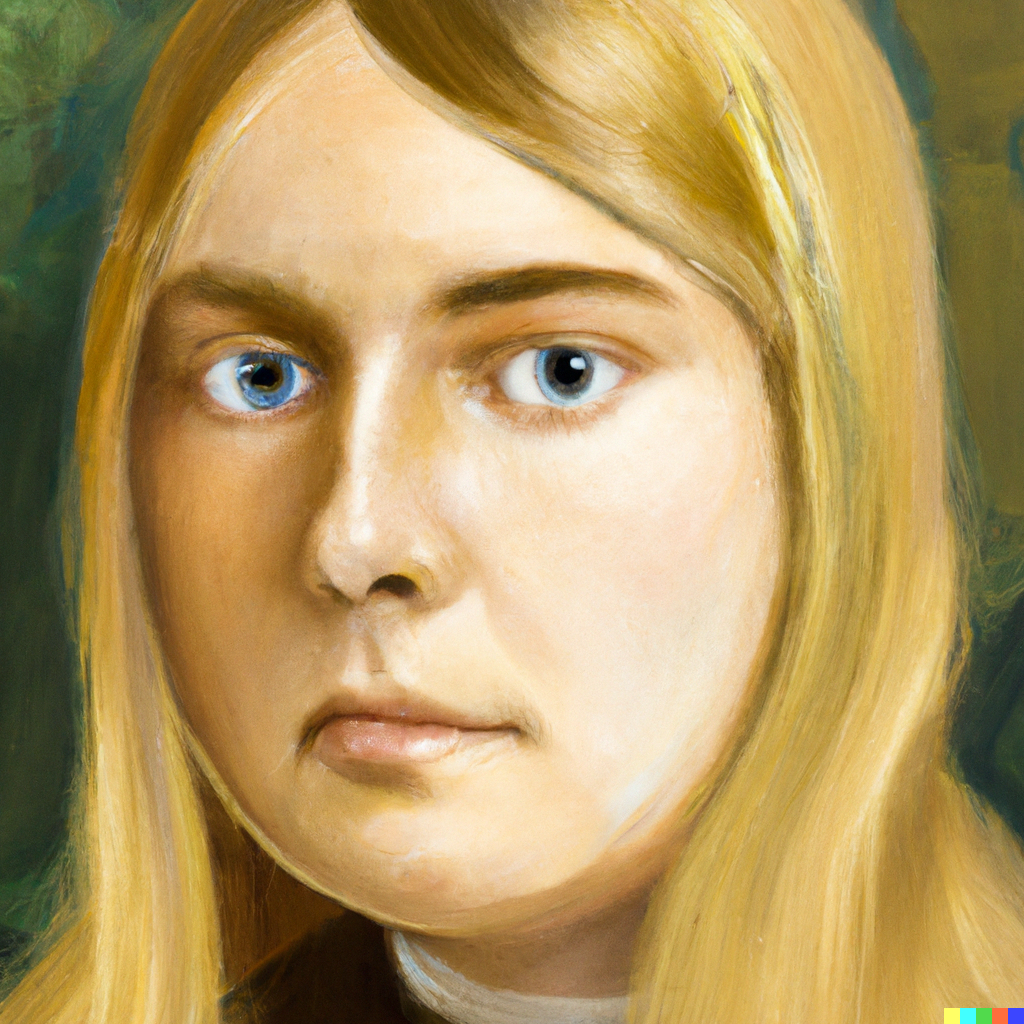
-
"Oil painting portrait in the style of Helen Lundeberg, young woman in her early 20s, dark blonde long layered hair, brown almond small eyes, dark thick eyebrows, pale skin, thin oval face, small mouth, weak chin, small gold earrings, Impressionism, autumn background, neutral and green color palette"
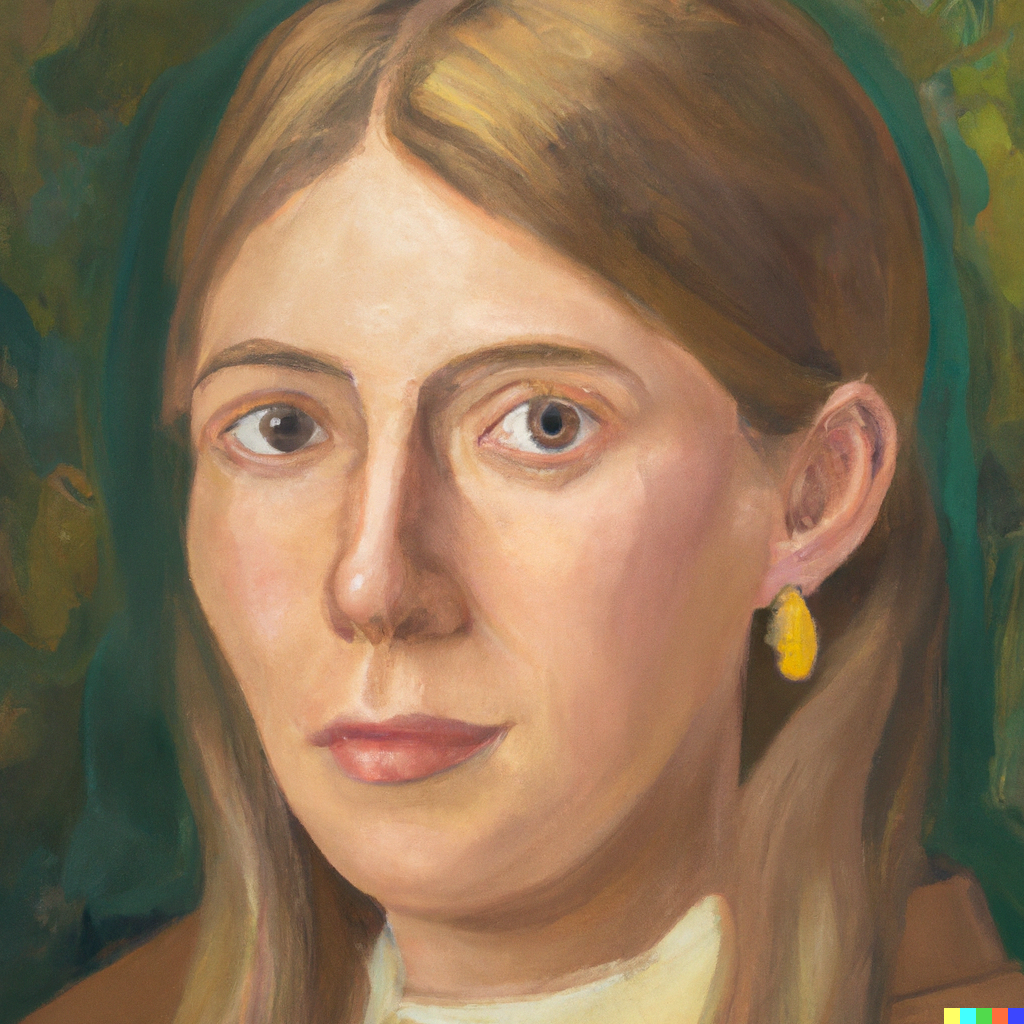
-
"Oil painting profile portrait in the style of Helen Lundeberg, Post-Surrealist, young woman in her early 20s, dark blonde long layered hair, brown almond small eyes, thick eyelashes, thick black eyebrows, pale skin, sharp cheekbones, thin face, high forehead, small mouth, weak chin, bulbous pointed nose, gold hoop earrings, hazy mountain background, fresco texture, neutral and green color palette"
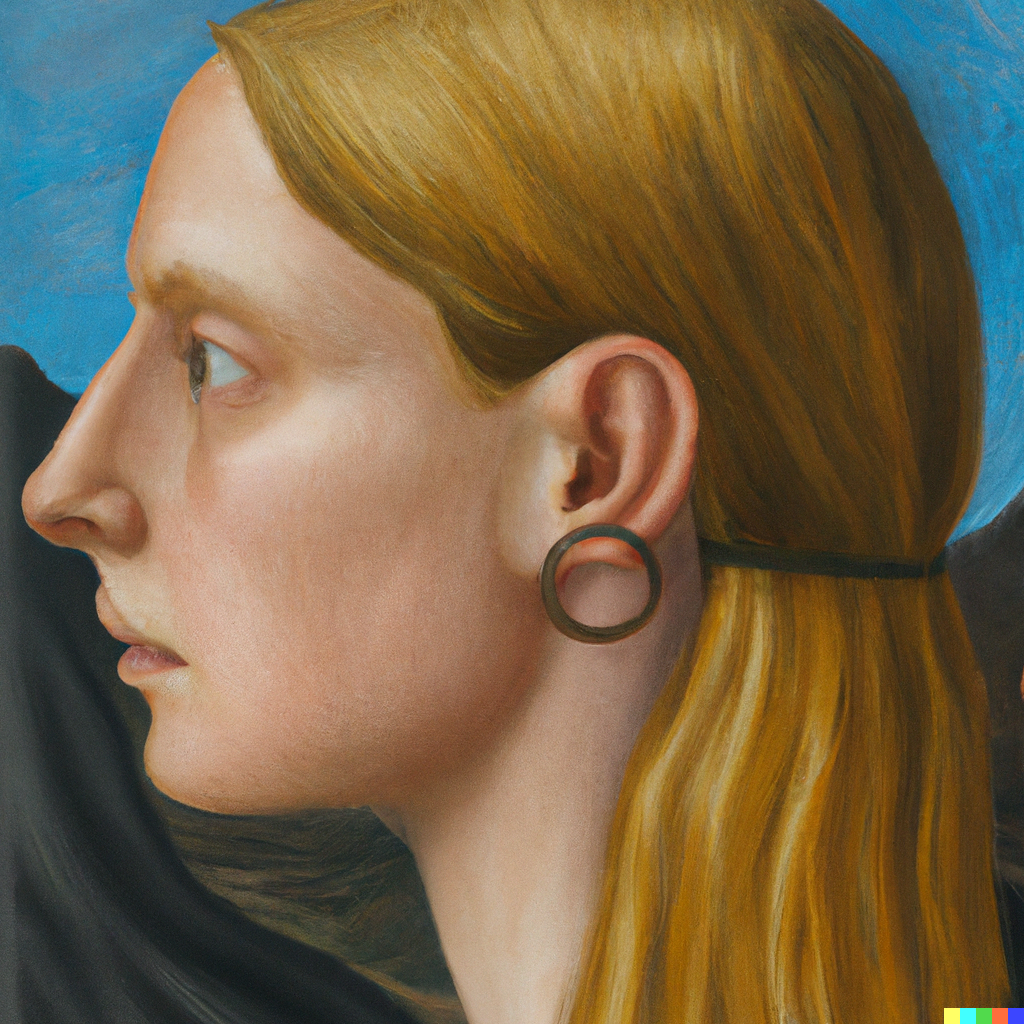
-
"Oil painting profile and torso portrait in the style of Helen Lundeberg, Post-Surrealist, young woman in her late teens, dark blonde long layered hair, brown almond small eyes, thick eyelashes, thick black eyebrows, sharp cheekbones, thin face, high forehead, small mouth, weak chin, bulbous nose, gold hoop earrings, hazy mountain background, fresco texture, green and brown color palette"
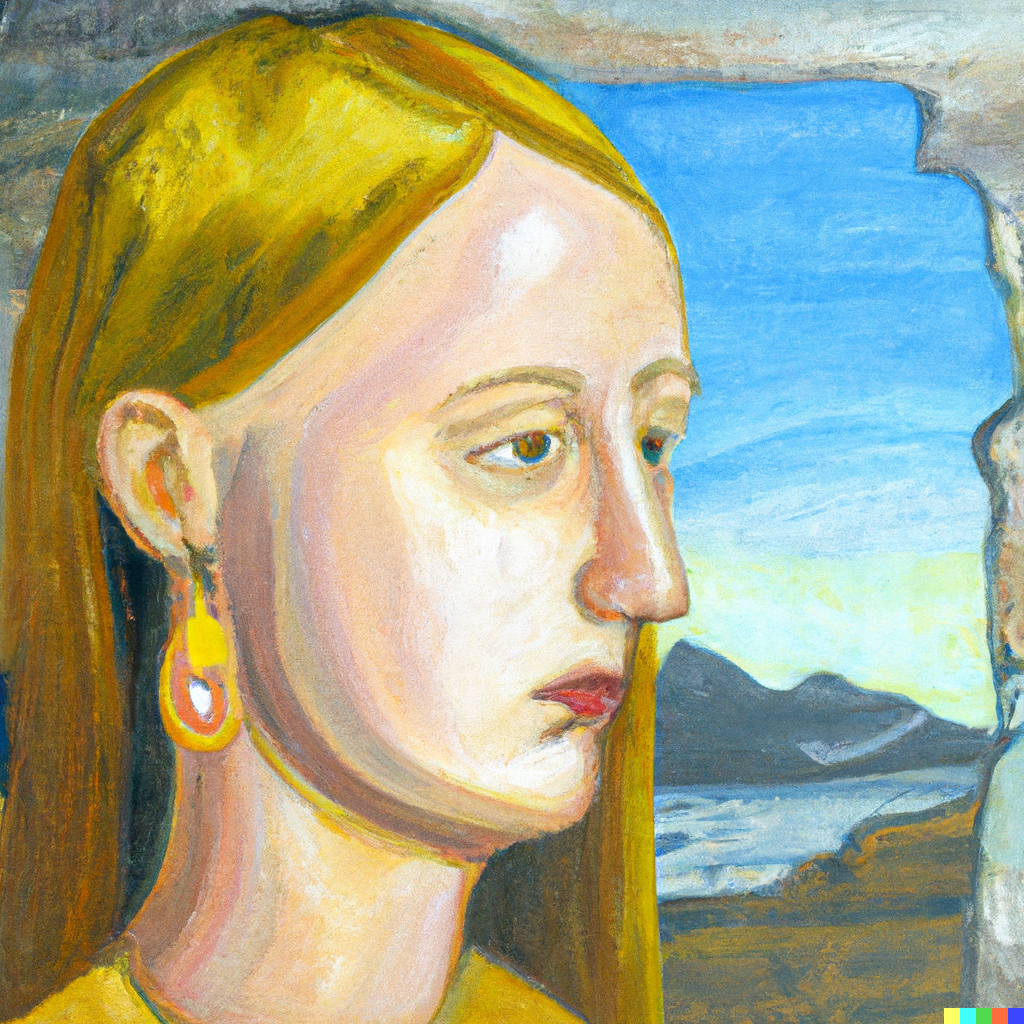
-
"Helen Lundeberg style portrait, Post-Surrealist, young woman in her late teens, dark blonde long layered hair, brown almond small eyes, bushy black eyebrows, sharp cheekbones, thin face, high forehead, small mouth, weak chin, bulbous nose, gold hoop earrings, fresco texture, green and brown color palette" (this is probably the most accurate due to a lack of detail)
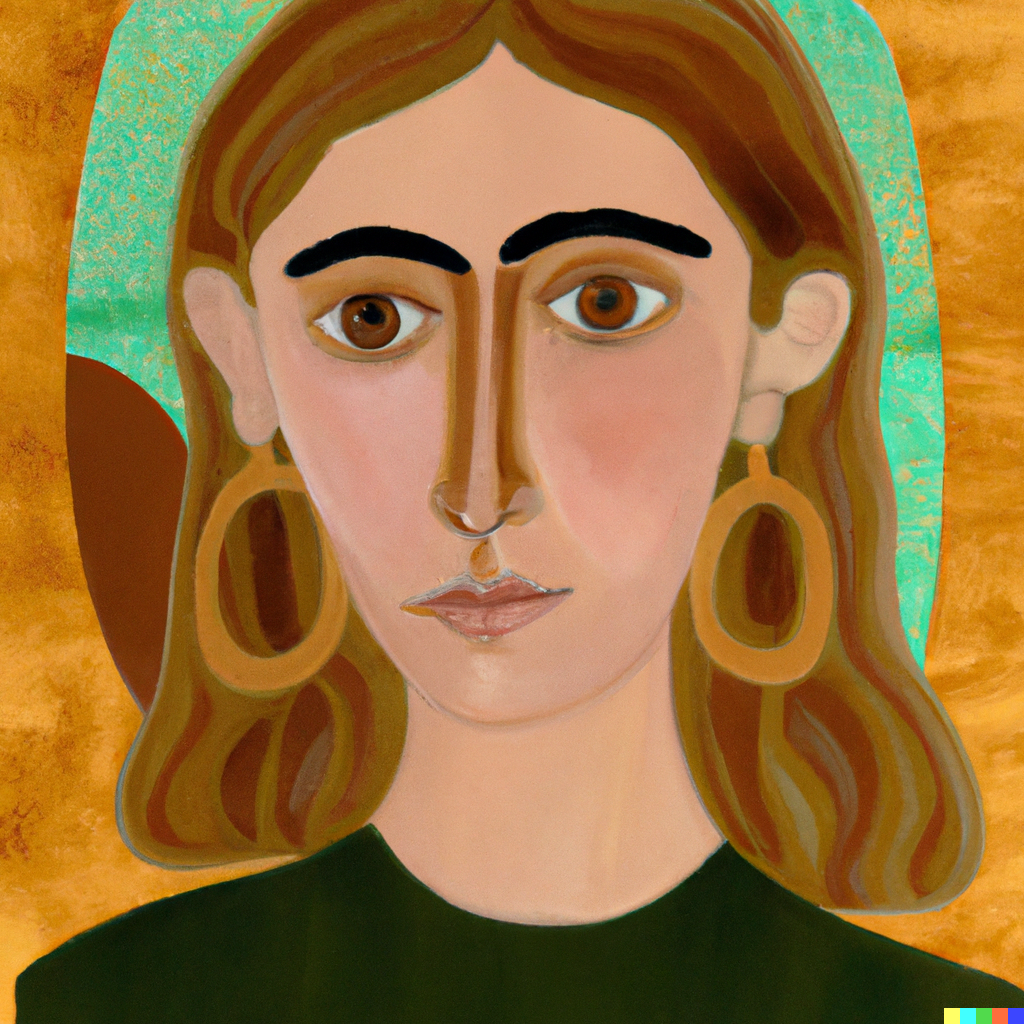
After this series of attempts at prompting a self-portrait in the style of a lesser-known artist, the most accurate result (in terms of resemblance) is surprisingly the furthest from the prompt. Regardless of how many details I provided, the generator consistently ignored certain features (like dark eyebrows) and often produced unexpected results even when prompts were only slightly tweaked between iterations.
One major takeaway from this experience is that my prompts often yielded outputs completely different from my expectation, which can be distracting and frustrating while pursuing a specific goal. The process didn't feel as fluid as self-contained ideation or direct manipulation of a work-in-progress; it was like a conversation in a language I barely know. I think that, with practice, phrasing and structuring prompts for detailed would feel more natural.
Evidently, producing a piece with a high degree of specificity, like a portrait, is a challenge for the AI, but I find this reassuring for artists. DALL-E and other AI art generators can be useful for ideation when abstract concepts need development. Meanwhile, artists can continue to showcase technical expertise for polished and well-rounded final products.